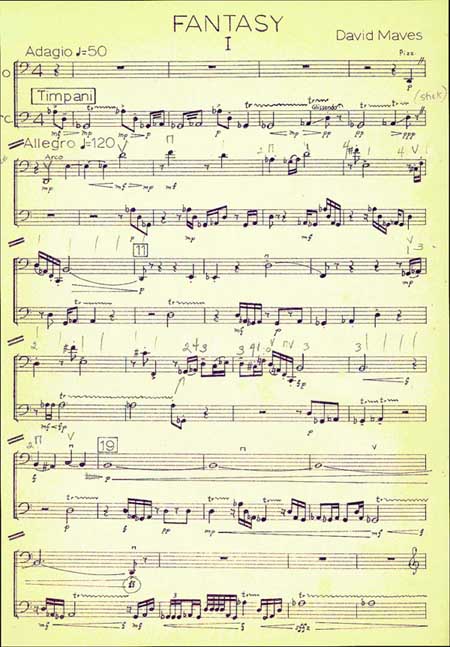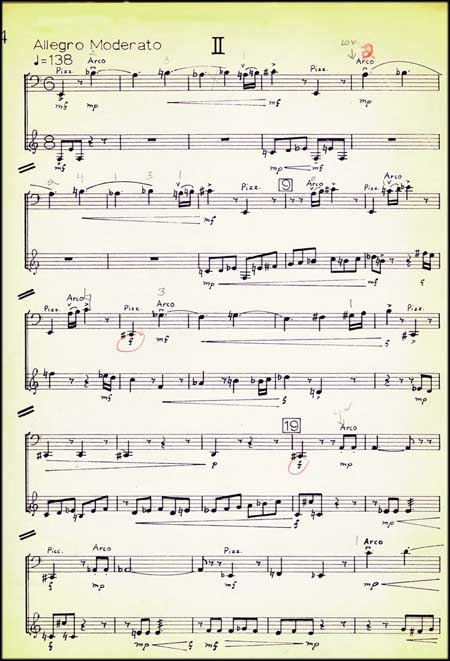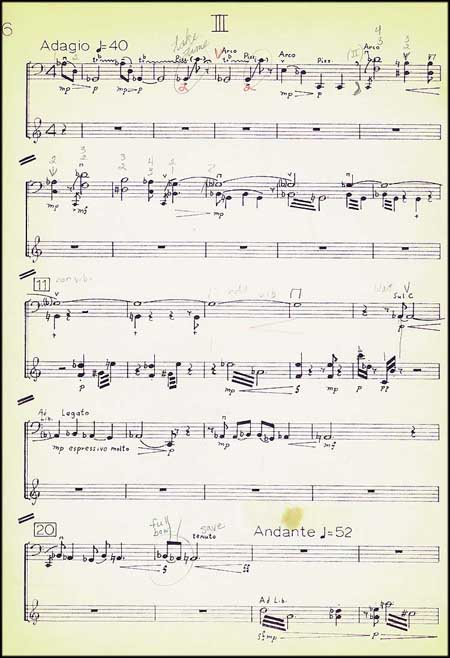|
|
Score
Samples Sound
Samples Circa 1' Premiere: March 1963, Ann
Arbor,MI. David Maves perc., Arthur Hunkins, cello |
|||||||||||||||



|
|
Score
Samples Sound
Samples Circa 1' Premiere: March 1963, Ann
Arbor,MI. David Maves perc., Arthur Hunkins, cello |
|||||||||||||||



Percussion
Equipment Required: 4 timpani (pedal), 4 octave marimba
Program notes (from the CD) by Matthew Naughtin
The Fantasy for Cello and Percussion
was written in 1962 while the composer was studying with Ross
Lee Finney at the University of Michigan, and bears evidence of the
attention to structure and technical solidity that Finney and his
successors made a hallmark of the U. or M. Composition Department.
Maves describes the work as a "Bartók-influenced 'arch form'
with the opening and closing idea for timpani and cello serving as
the archlike 'pillars' supporting the Scherzo that forms
the 'keystone'." Maves has been characterized as a composer who is
not afraid of big gestures and Romantic excess, and the
Fantasy, although an early piece, exhibits signs of his mature
penchant for an atmosphere of quasi-operatic drama. The opening
Adagio begins with an extended soliloquy for cello and
timpani, with the full tonal range of both instruments being
exploited. The timpanist is called on here to make his instrument
"sing" in an extended series of sostenuto rolls with pedal glissandos
on the high drum in counterpoint to the cello's lower register. He
then switches to the marimba to close the first section with an
operatic outburst that dies away bleakly. The central Scherzo
dances grimly along in 6/8 time with a wheedling theme that
seesaws between minor and major seconds. The influence of
Bartók's "night-music" movements from his concertos and string
quartets is evident here in the often disjointed and macabre texture,
and the rhythmic unisons in the middle Trio section
provide a welcome contrast to the disconnected phrases of the outer
sections. The final section begins with the cello quoting the melodic
phrase with which the timpani opened the work. Against a steady,
ticking accompaniment in the marimba, the cello plays a long, singing
arioso that builds to an impassioned cadenza capped by
the fortissimo entrance of the timpani, again with the opening phrase
of the work. The arch complete, cello and timpani fade away on a
final D.
Back to
Top